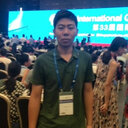Peripheral inflammation/immune indicators of chemosensitivity and prognosis in breast cancer patients treated with neoadjuvant chemotherapy.
Nyckelord
Abstrakt
UNASSIGNED
Neoadjuvant chemotherapy (NAC) has become a standard treatment for locally advanced breast cancer. The present study was designed to investigate the predictive value of different peripheral inflammation/immune biomarker responses to NAC and prognosis in breast cancer patients.
UNASSIGNED
A total of 180 breast cancer patients treated with NAC in the First Affiliated Hospital with Nanjing Medical University between January 2008 and March 2015 were enrolled in the study. The associations between inflammation/immune indicators and pathological complete response (pCR) were determined, and the prognostic value of inflammation/immune indicators was also evaluated.
UNASSIGNED
In the univariate analysis, patients with a high pretreatment peripheral lymphocyte count (.2.06×109/L) showed a higher pCR rate than those with a low lymphocyte count (23.9% vs 10.4%, P=0.023). The pCR rate of patients with a neutrophil: lymphocyte ratio ≤2.15 was significantly higher than that of patients with a high neutrophil: lymphocyte ratio (20% vs 7.8%; P=0.03). However, multivariate analysis revealed that only the high lymphocyte count was predictive for pCR (odds ratio: 4.375, 95% CI: 1.429-13.392, P=0.010). In the survival analysis, patients with a higher neutrophil count (.2.65×109/L) were confirmed to have a shorter disease-free survival (hazard ratio: 4.322, 95% CI: 1.028-18.174, P=0.046), and the high neutrophil count was significantly associated with lymphovascular invasion (P=0.037).
UNASSIGNED
We demonstrated that a high level of baseline peripheral lymphocyte count can be a predictor for high efficacy of NAC for breast cancer patients, and low baseline peripheral neutrophil count may contribute to the favorable disease-free survival.





